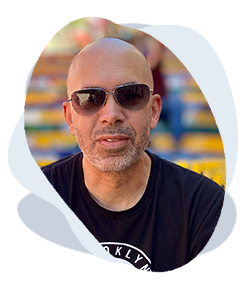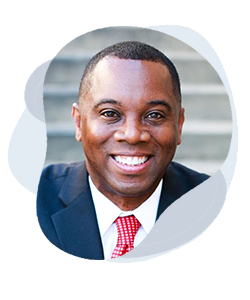It’s said that a leader is one that knows the way, goes the way, and shows the way—but it’s the teams they forge that make it a reality. Great leadership and great teamwork go hand in hand but building a team that clicks is an art—and far from simple.
Unconscious bias affects all of us, even leaders. Deep-rooted attitudes and stereotypes color our views, actions, and decisions, whether we want them to or not. It’s only through taking a step back and recognizing them for what they are, that we can tackle their effects.
Carlos Thomas knows a thing or two about effective teams. As VP of strategic accounts for the Americas and JAPAC in Oracle’s energy and water unit, he heads a team that handles contracts valued in billions of dollars. At this level, high performance isn’t just expected, it’s essential.
Unconscious bias
Carlos believes that it’s not enough to be aware of unconscious bias, you need to counteract it with what he calls ‘conscious bias’. “I believe leaders need to have a conscious bias when it comes to building their teams. This is the only way to break the historic mindset that has been unconsciously ingrained in them,” he explains The McKinsey report, Diversity wins: How inclusion matters makes a powerful business case for battling bias. It’s main finding? That diverse companies were 36% more likely to outperform their less diverse counterparts on profitability. “If what the McKinsey report says is true, then why wouldn’t every leader want a more diverse and inclusive team? Why are we in business? To have fun or to make money?” Carlos asks. “If we are here just to have fun, then keep doing what you’re doing! But the data tells us that if we have to grow and be more profitable, we need to be conscious about what we are doing when we hire and build teams.”

VP, Strategic Accounts, Americas & JAPAC
Embracing differences
Another Oracle leader, Edwin L Bowman III, group VP for North American Linux and virtualization management sales, echoes this, and offers an outline for how leaders can take action. “To me, diversity means a commitment to embracing differences,” Edwin explains. “It is not just about recognizing differences, but leveraging differences to pursue understanding, learning and advancement. Leaders can help create more diverse teams by being aware and present. They can lead by example to promote and encourage inclusion. They can work to help call out and avoid unconscious bias,” he emphasizes. “When hiring, leaders can also proactively partner with HR to ensure candidate pools resemble the communities and organizations Oracle serves.”
In his own life as a leader, Edwin sees the value in putting employee needs and goals first. “While I realize I must contribute to vision, strategy and execution, I also take pride in leveraging a ‘support’ leadership style to achieve success. Using my career experience and role within Oracle to impact individual success is extraordinarily rewarding.”
Attracting diversity
As a company, Oracle is tackling this head-on with initiatives like training in bias recognition. The approach is working and employees are seeing for themselves why diversity and inclusion are essential competencies for modern leaders. However, leadership isn’t just about top-level thinking; it also encompasses knowledge sharing—and knowing when to step back. In having the confidence to choose the right people, leaders also need to know when to get out of the way let their people do what they do best. Edwin explains: “I always try to empower people to be their best selves. Empower them to make decisions—be the most creative when it comes to solving problems for a customer. I do this by being an example to others. Whether we are in front of a customer or an internal planning session I always bring that creative and problem-solving mindset to the table.”
It’s an approach that seems to be paying off. And it’s been gaining traction in other departments.
Great corporate culture
“I get the opportunity to work across many different teams at Oracle. All of them have their own little culture,” Carlos adds. “Some are more conservative, while others are very creative in how they are solving problems for customers. When we do these ultra large deals across groups within Oracle, they always comment on how different and refreshing our team functions. “Often, they will ask if they can join us because they don’t want to go back to the traditional way of selling! When you combine those elements—empowerment and passion—it creates a great corporate culture that people want to be a part of when they come to work every day.”
A constant process

Group Vice President, North America Sales
Edwin takes the long view and sees building diversity in this way as a process that demands constant thought and involvement. “Building great teams is art and science,” he explains. “In my experience, it is a constant process of assessing productivity, addressing its needs and not being afraid to alter its makeup.” With that in mind, he’s keen to outline the leadership advice he’s accumulated from mentors and personal experience over the years:
- Set a good example (lead by example)
- Communicate clear expectations
- Make decisions with people in mind
- Take the time to develop your own opinions
- Recognize and celebrate success
- Don’t be afraid to surround yourself with people that know more than you!
What’s striking about this advice is how much of it is universal. That for all our differences, there are universal qualities to good leadership that can bind us all together in reaching common goals.
Do you want to collaborate with leaders who champion the power of diversity, or become one yourself? Explore our latest open roles now and help create future with us.
